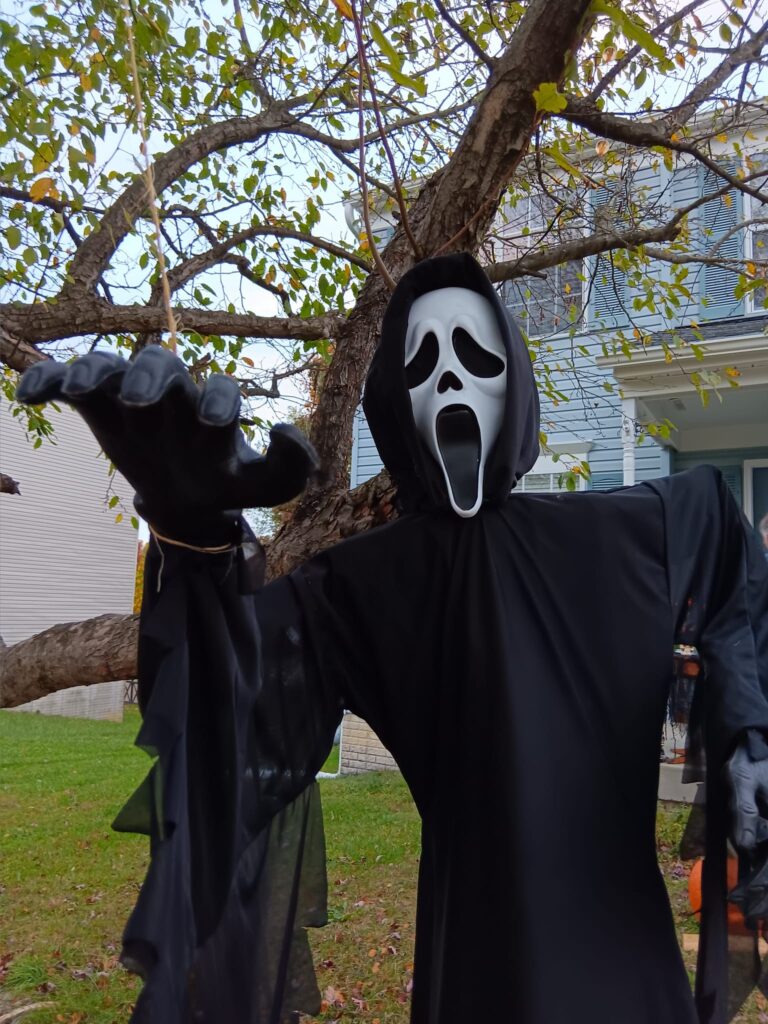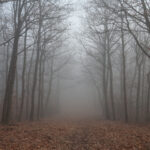 For the past week, the weather here in Maryland has been in the 80s. Having recently moved here, I’ve been told this is unusual for late October. And overnight, it plummeted. The high today was 50°, with it dropping further by sunset. It’s Halloween, All Hallow’s Eve, Samhain, and I’m glad to feel a brisk nip in the air. By the time the ghosts, goblins, and ghouls arrive, it should be down to 40°. Soon, it will be time to don my purple wig and pull my black wool cloak tightly around me as I step outside to light the pumpkins.
For the past week, the weather here in Maryland has been in the 80s. Having recently moved here, I’ve been told this is unusual for late October. And overnight, it plummeted. The high today was 50°, with it dropping further by sunset. It’s Halloween, All Hallow’s Eve, Samhain, and I’m glad to feel a brisk nip in the air. By the time the ghosts, goblins, and ghouls arrive, it should be down to 40°. Soon, it will be time to don my purple wig and pull my black wool cloak tightly around me as I step outside to light the pumpkins.
So, what is Halloween? Where do the traditions we see today come from?
In ancient times, the Celts in Gaul (modern-day Europe) and the British Isles celebrated Samhain (pronounced “sow-in” or “sav-in”), the fourth and final fire festival of the year. It marked the end of the harvest season and the beginning of the dark times, or winter. They believed the veil between the world of the living and the world of the dead was at its thinnest point. The boundaries were blurred, and spirits could cross into the mortal realm. Others believed this was a time to honor their ancestors. Either way, bonfires were lit as a symbol of warmth and protection in the coming winter. They also served to honor the dead and ward off evil forces. Sometimes, they dressed up in costumes so that evil spirits would not recognize them.
It was a time for communal feasting, to share the last of the harvest’s bounty. Livestock were often slaughtered during this time. The animals that would be kept over winter were led through the smoke of the fires. They believed this would protect them from illness and predators. With the veil at its thinnest, many practiced divination, fortune-telling, and dream interpretation to see what the future held for the local folk.
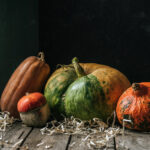 The people made offerings to the ancestors, and places were set at the table for them. In some areas, the families left meals outside for them when they returned home from the festivities. Embers from the bonfires were taken home to reignite the hearth fires. These were often placed in a hollowed-out gourd. They lit candles and said blessings to ensure the household survived the winter until springtime arrived again.
The people made offerings to the ancestors, and places were set at the table for them. In some areas, the families left meals outside for them when they returned home from the festivities. Embers from the bonfires were taken home to reignite the hearth fires. These were often placed in a hollowed-out gourd. They lit candles and said blessings to ensure the household survived the winter until springtime arrived again.
As the Romans moved into the Celtic territories, they adopted some of these practices in worshipping their own gods. Feralia, a Roman festival, honors their dead as well as the goddess Pomona, the goddess of fruit. While bobbing for apples may have originated in Celtic civilizations, the Romans incorporated it in their celebrations of the goddess. While Feralia typically takes place in February, many rituals echo those of the ancient Celtic Samhain.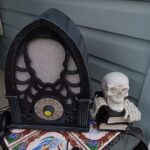
In the 7th century, the Christian Church began to replace these pagan celebrations with holidays of their own. November 1st became known as All Saints’ Day to honor the saints. They incorporated the ancient practices of keeping the ancestors’ memories alive by also calling it All Souls Day. The evening before became known as All Hallow’s Eve, a celebration of the recently departed.
In Scotland, children traditionally practice “guising.” People paraded around in costumes to protect their identities from the spirits that wandered the streets. They would be safe from harm if they blended in with the demons. They performed tricks or sang songs for which they were rewarded with a treat to protect them further from evil spirits.
 Irish and Scottish ancestors immigrating to America brought their customs with them. That included the belief in witches, spirits, and ghosts. Today, carving a ghoulish pumpkin can be traced back to the ancient families taking a bit of the bonfire home in a carved-out gourd for protection against evil spirits.
Irish and Scottish ancestors immigrating to America brought their customs with them. That included the belief in witches, spirits, and ghosts. Today, carving a ghoulish pumpkin can be traced back to the ancient families taking a bit of the bonfire home in a carved-out gourd for protection against evil spirits.
Native Americans had their own autumn festivals and traditions that varied by tribe. One of the more common was the Green Corn Festival, celebrated along the Eastern seaboard. Typically, it takes place in the autumn when the corn is harvested and involves feasting and dancing. The central theme is renewing their ties with the land, focusing on uniting the community. Natives throughout the United States celebrate the harvest with traditional dances, music, and ceremonies to give thanks for what the land has provided and to seek blessings for the coming year.
Immigrants from other countries had their practices as well. Since I recently left Germany, I would be remiss not to mention my home of the last few years. Germans have only recently begun to embrace the American holiday of Halloween, but everyone has heard of the autumn celebration of Oktoberfest. But did you know that officially, this is only celebrated in Munich? The festival began as the wedding celebration of Crown Prince Ludwig and Princess Therese of Saxony-Hildburghausen on October 12, 1810. It took place on the fields in front of the gates to the city, and the citizens of Munich were invited to share in the festivities. The gala included horse racing, feasting, and, of course, beer. While only the festival in Munich can claim the name, this does not mean each town does not host its own beer festival, complete with beer, bratwurst, and oompah bands!
Germans have only recently begun to embrace the American holiday of Halloween, but everyone has heard of the autumn celebration of Oktoberfest. But did you know that officially, this is only celebrated in Munich? The festival began as the wedding celebration of Crown Prince Ludwig and Princess Therese of Saxony-Hildburghausen on October 12, 1810. It took place on the fields in front of the gates to the city, and the citizens of Munich were invited to share in the festivities. The gala included horse racing, feasting, and, of course, beer. While only the festival in Munich can claim the name, this does not mean each town does not host its own beer festival, complete with beer, bratwurst, and oompah bands!
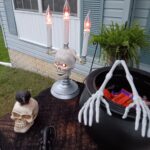 Over time, each of these customs combined to create a unique American holiday known as Halloween. While many of the celebrations today have become commercialized, such as trick-or-treating, wearing costumes, carving pumpkins, bobbing for apples, and others that exist today, it is easy to see the roots of these activities stemming from a rich tapestry of cultural beliefs.
Over time, each of these customs combined to create a unique American holiday known as Halloween. While many of the celebrations today have become commercialized, such as trick-or-treating, wearing costumes, carving pumpkins, bobbing for apples, and others that exist today, it is easy to see the roots of these activities stemming from a rich tapestry of cultural beliefs.
